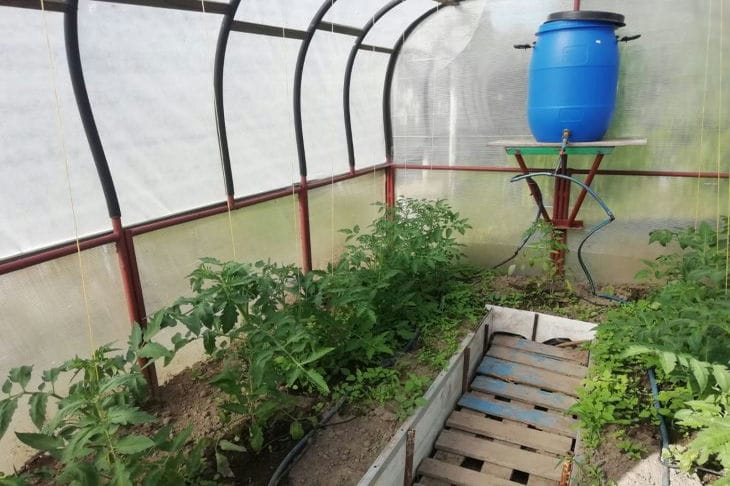Paths built with your own hands in a greenhouse save you a lot of trouble.
When watering plants, your feet won't get wet, weeds won't break through to the surface, saving you from additional weeding, and much more.
There are many materials that can be used as inter-row flooring, says Anastasia Kovrizhnykh .

Film
The cheapest and most accessible material for creating paths between beds.
It is easy to install, does not require additional fastening and has a fairly long service life (about 2 years). The only downside is that the film provokes mold formation.
Sand
Another popular option. It drains water well and does not allow weeds to pass through, which makes it much easier to care for the beds.
However, sand must be laid according to certain criteria: the layer must be thick enough so that it does not sift or even change shape, and also does not interfere with the growth of plant roots.
Crushed stone
A material for those who value reliability and durability. It is smooth, does not provoke the appearance of weeds, and also allows you to safely drive a cart or drive a greenhouse car.
However, crushed stone is not the cheapest option, and it must be laid at a certain thickness so that it does not wash away due to rain.
Tree
Material for those who want to create maximum coziness and comfort. In addition, wooden paths are a virtually endless story for creative tuning and giving the greenhouse a unique style.
However, using wood is a rather expensive option that requires regular maintenance (pruning, coating with protective varnish, etc.)
Ceramic tiles
Ideal for those who want to create a beautiful path in the greenhouse for a long time.
The tile is not afraid of moisture and does not provoke the formation of mold, and also requires little maintenance. However, purchasing ceramic tiles is the most expensive option.
Each coating has its own characteristics, so it is better to choose based on your own preferences and financial budget.
Earlier we talked about how to grow large onions in no time at all in your garden.









